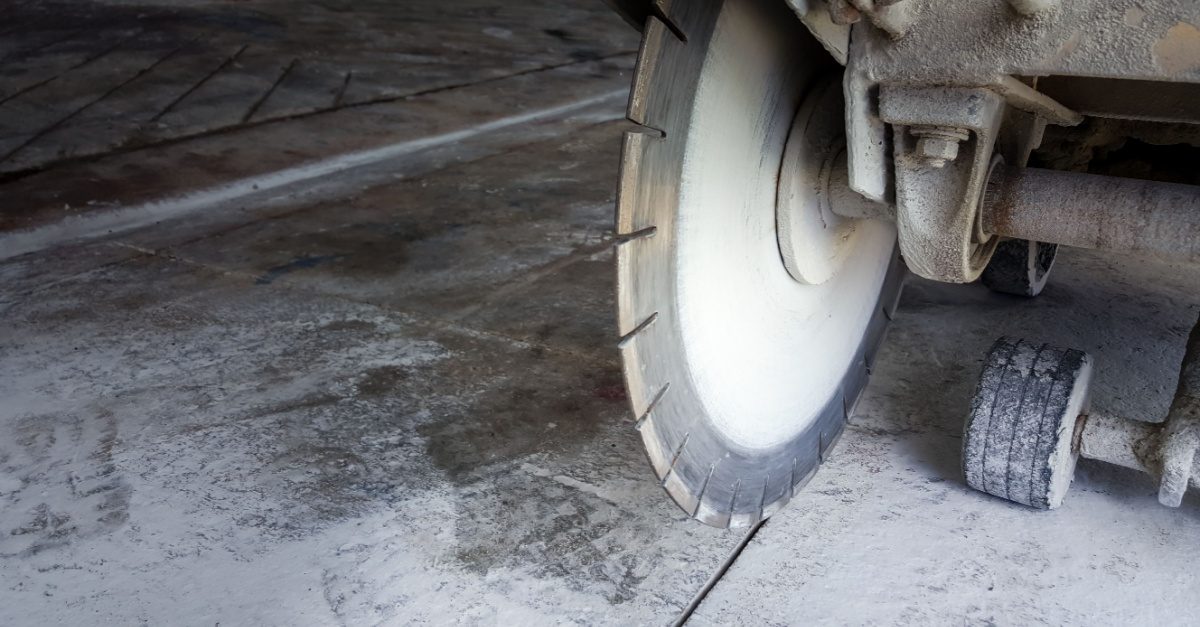
How Concrete Cutting Dust Control Protects Your Team and Project
Concrete cutting is a necessary part of many building and renovation projects. But the process produces fine dust that can harm people and compromise the quality of your work. Dust control is a vital health measure and a practical step that protects your team, saves time, and improves outcomes for the entire project.
Risks of Concrete Dust
When you cut into concrete, it releases tiny particles known as silica dust. These particles are so small that you can’t always see them, but they travel quickly and linger. Breathing them in can cause serious lung problems over time, including silicosis and chronic bronchitis. Even short bursts of exposure may cause irritation to the nose, throat, and eyes.
Construction dust also spreads across surfaces and tools. It clings to equipment, disrupts finishes, and contaminates nearby areas. That means dust doesn’t just put health at risk. It threatens the quality and efficiency of your site.
That’s why controlling dust isn’t optional. It’s the key to protecting your team, keeping the site safe, and ensuring your project runs to the highest standard.
Protecting Your Team’s Health
Your team’s health is always the top priority. Dust control keeps dangerous particles out of the air, reducing the chance of long-term illness.
One proven way to reduce exposure is by engaging professional concrete cutting services. Companies like Guarda Systems use advanced dust suppression methods designed for concrete cutting. Their expertise helps capture harmful dust at the source and prevent it from spreading across the site.
Basic protection also plays an important role. Simple measures like wearing face masks, safety goggles, and other protective gear minimise exposure and keep the team working comfortably.
Improving Worksite Safety
Dust affects more than just breathing. A layer of fine powder on floors can create slippery conditions, while airborne particles reduce visibility. Together, these hazards raise the chances of trips, slips, and accidents.
Effective dust control reduces these risks. When the air is clear and the ground is safe, your team can move confidently and work without distraction. This lowers the likelihood of injuries and the costly delays that come with them. In construction, small improvements in safety often lead to big gains in efficiency.
Enhancing Project Quality
Concrete sawing doesn’t respect boundaries. It produces dust that settles on wet surfaces, sticks to tools, and interferes with finishes. If dust embeds itself in fresh paint or sealant, it can ruin the look of your final product.
Controlling dust helps you deliver the high standards your clients expect. Clean surfaces mean smoother finishes that last and impress. Consistent quality builds client trust and keeps your work standing out for the right reasons.
Meeting Legal and Ethical Responsibilities
Construction sites are subject to strict safety regulations, and dust control is part of those rules. Ignoring it could lead to fines, project shutdowns, or even legal claims. Compliance keeps you on the right side of the law and ensures your project avoids unnecessary interruptions.
But regulations aren’t the only reason to take dust seriously. You also have an ethical responsibility to protect the people who work with you. By investing in dust control, you show respect for your team and reinforce your commitment to safe working practices.
Boosting Productivity
A dusty environment slows everything down. Workers lose focus when they’re uncomfortable or coughing, and constant cleaning eats into valuable time. When you control dust, you clear the air and the schedule.
Using wet cutting methods, for example, stops dust before it spreads and reduces the need for repeated clean-ups. Your team can stay on task, tools perform better, and the project keeps its momentum. That means fewer interruptions, less wasted effort, and more steady progress towards completion.
Cutting Costs Over Time
Dust control may feel like an extra expense, but it saves money in the long run. Avoiding rework reduces material waste, while better protection for tools and equipment means fewer repairs and replacements. Protecting health also lowers the risk of sick leave and claims.
These savings aren’t just financial. By cutting down on waste and extending the life of tools, you’re also reducing unnecessary consumption. That makes your project more efficient and supports sustainable building practices. Over time, this combination of cost control and resource responsibility adds real value and strengthens your reputation as a reliable contractor.
Final Words
Concrete cutting dust is more than an inconvenience. It’s a health hazard, a safety risk, and a threat to quality. By controlling dust, you protect your team, keep the site safe, and deliver better results.
Treat dust control as a core part of project planning, not an afterthought. It’s the smartest way to protect people, safeguard quality, and support sustainability in construction.

